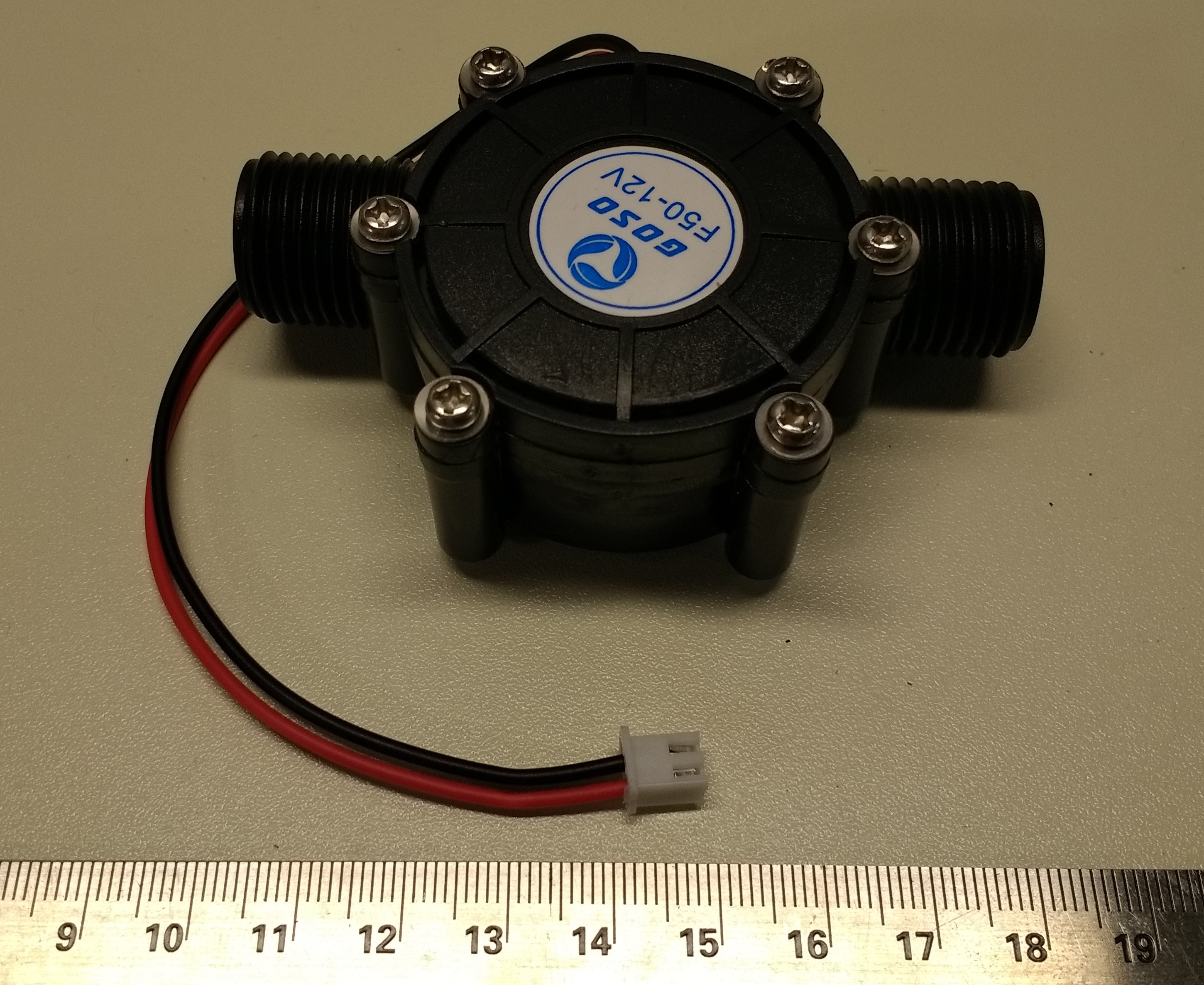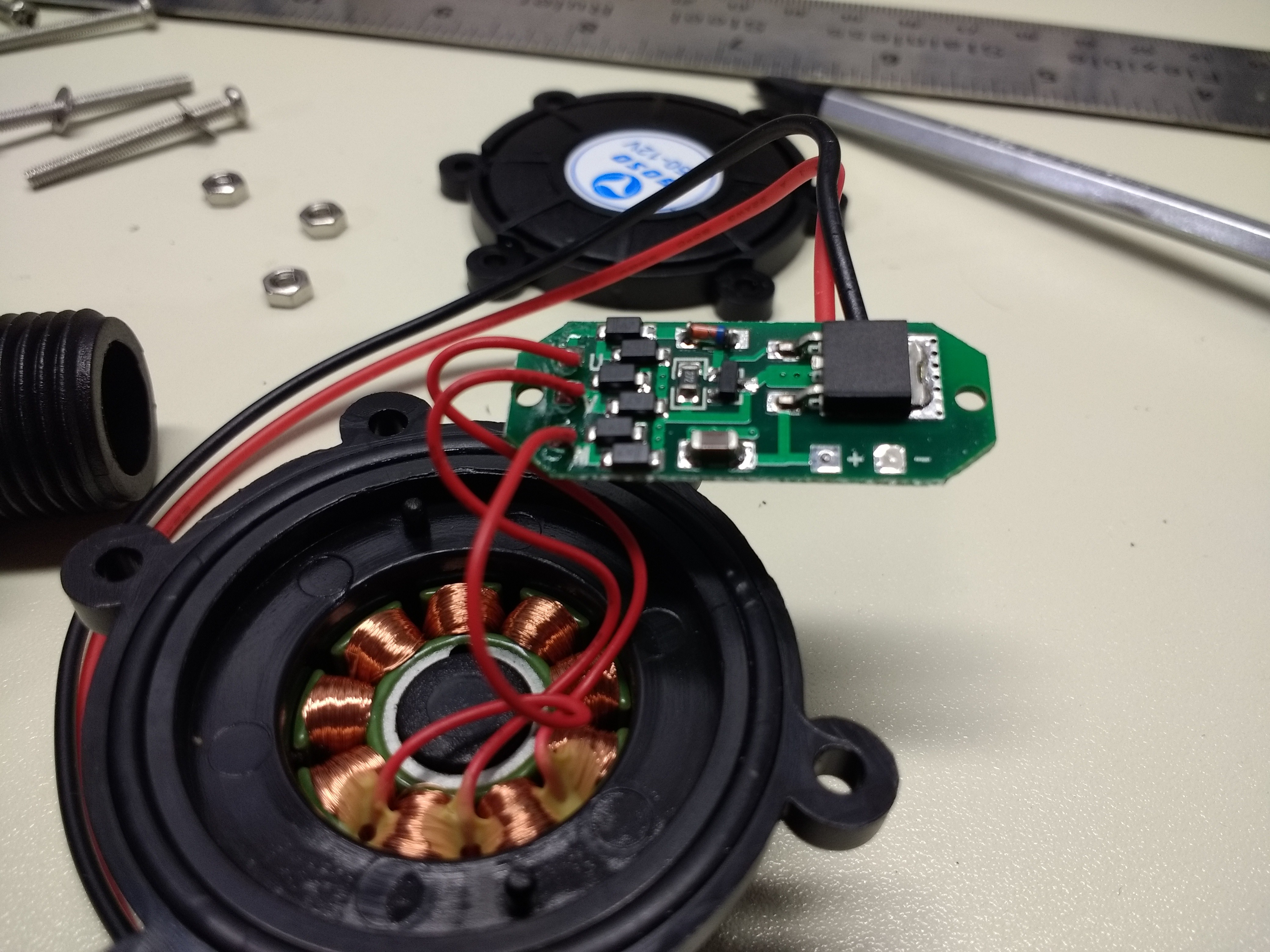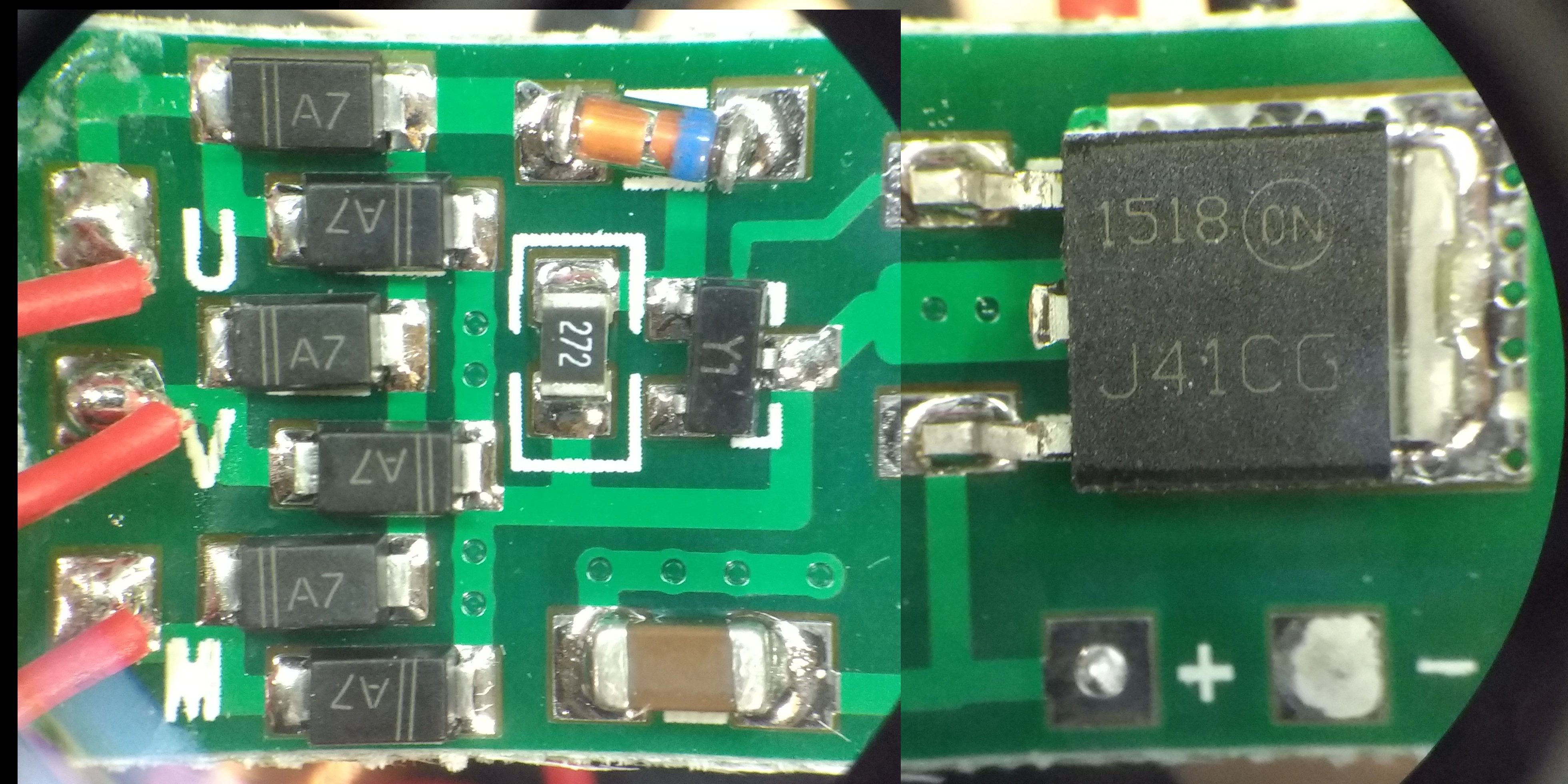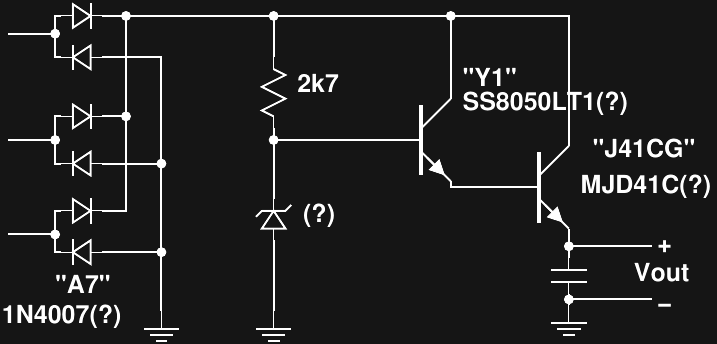When manufacturers use security fasteners on a device (like on a hard drive), they're saying they don't want you to open it. When they use Phillips, I can only assume you're supposed to tear the thing apart. So, guess what happened a few minutes after this arrived in the mailbox?

There was minimal documentation on ebay about what these things actually are, but they came in 5V and 12V versions. I bought one of each (from different vendors), and the 12V happened to arrive first. I figured they were probably wound with a different number of turns or something like that to produce different output voltages. Imagine my surprise on opening the case and finding this:

The 9 coils are wired as a 3-phase generator and there's a circuit board in there! OK, time to figure out what it does. I couldn't get the whole PCB into the frame of the inspection microscope, so I stitched this image (poorly) from two shots:

The three red wires on the left come from the coils. The six SOD-123's are obviously diodes of some sort in a 3-phase bridge rectifier. It turns out "A7" is a common code for SMD packages. These could be 1N4007 A7's. If so, replacement with appropriately-rated Schottky's might improve efficiency. I'll measure the forward drop after removing one from the PCB.
From what I can tell, this is the circuit:

I'm assuming the glass diode is a zener since it is reverse-biased by the 2k7 resistor. The SOT23 appears to be a SS8050LT1 NPN transistor, while the larger TO-252 a power NPN, MJD41C. It seems fitting that I was only able to decode the component markings after searching on ebay, where I bought the mystery generator in the first place...
Anyway, this looks like a crude zener-based voltage regulator for charging 12V batteries. When I get a chance, I'll re-assemble and test it. In the end, I'll probably end up tossing this PCB and replacing it with something more suited to my end goals.
The other side of the assembly shows the turbine itself:

I'm not sure how well sealed this whole thing is or if the plastic is food-safe (doubtful!) and I noticed some tiny solder balls on the PCB, so I'm thinking for now I'll keep it out of the potable water lines.
 Ted Yapo
Ted Yapo
Discussions
Become a Hackaday.io Member
Create an account to leave a comment. Already have an account? Log In.